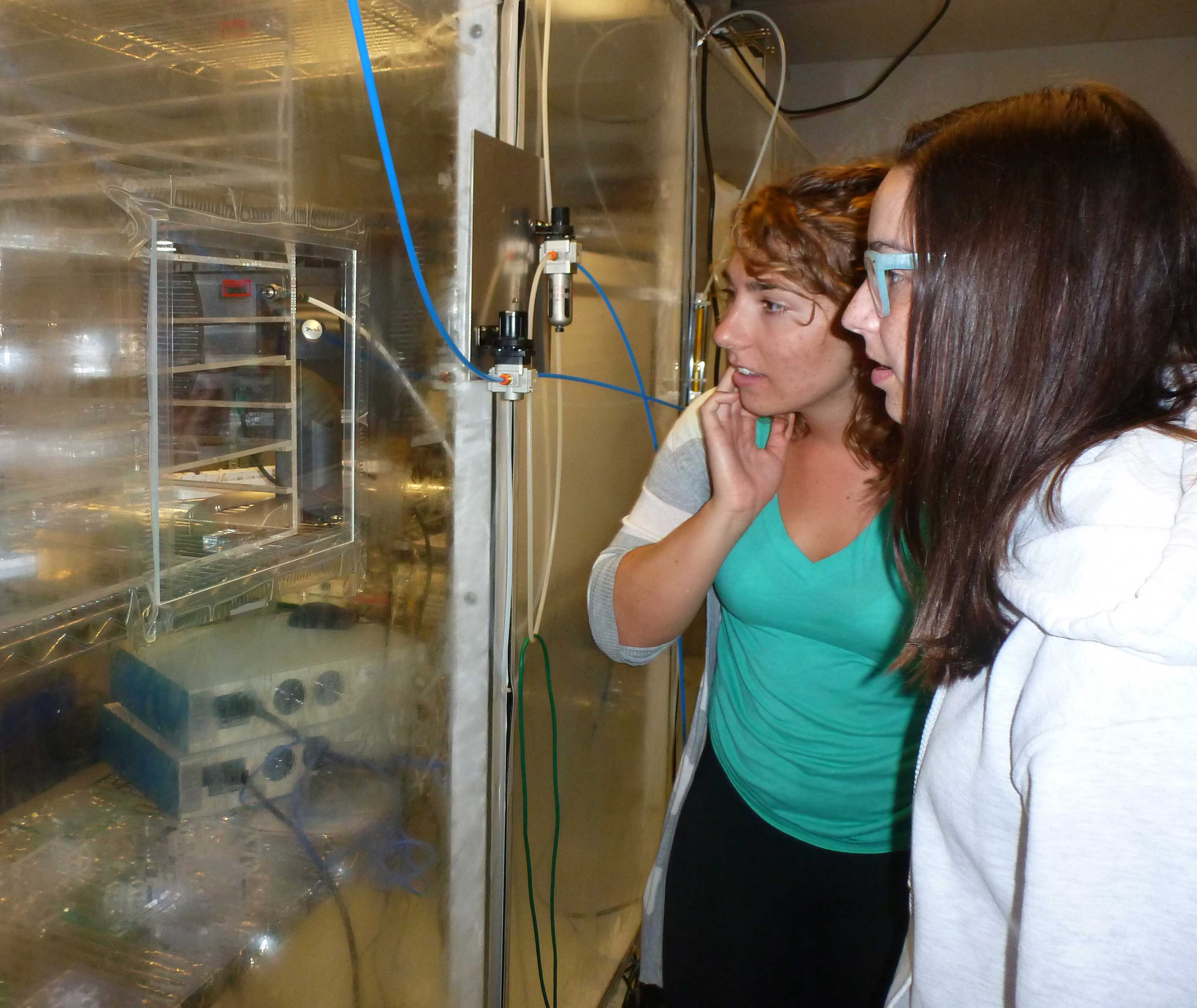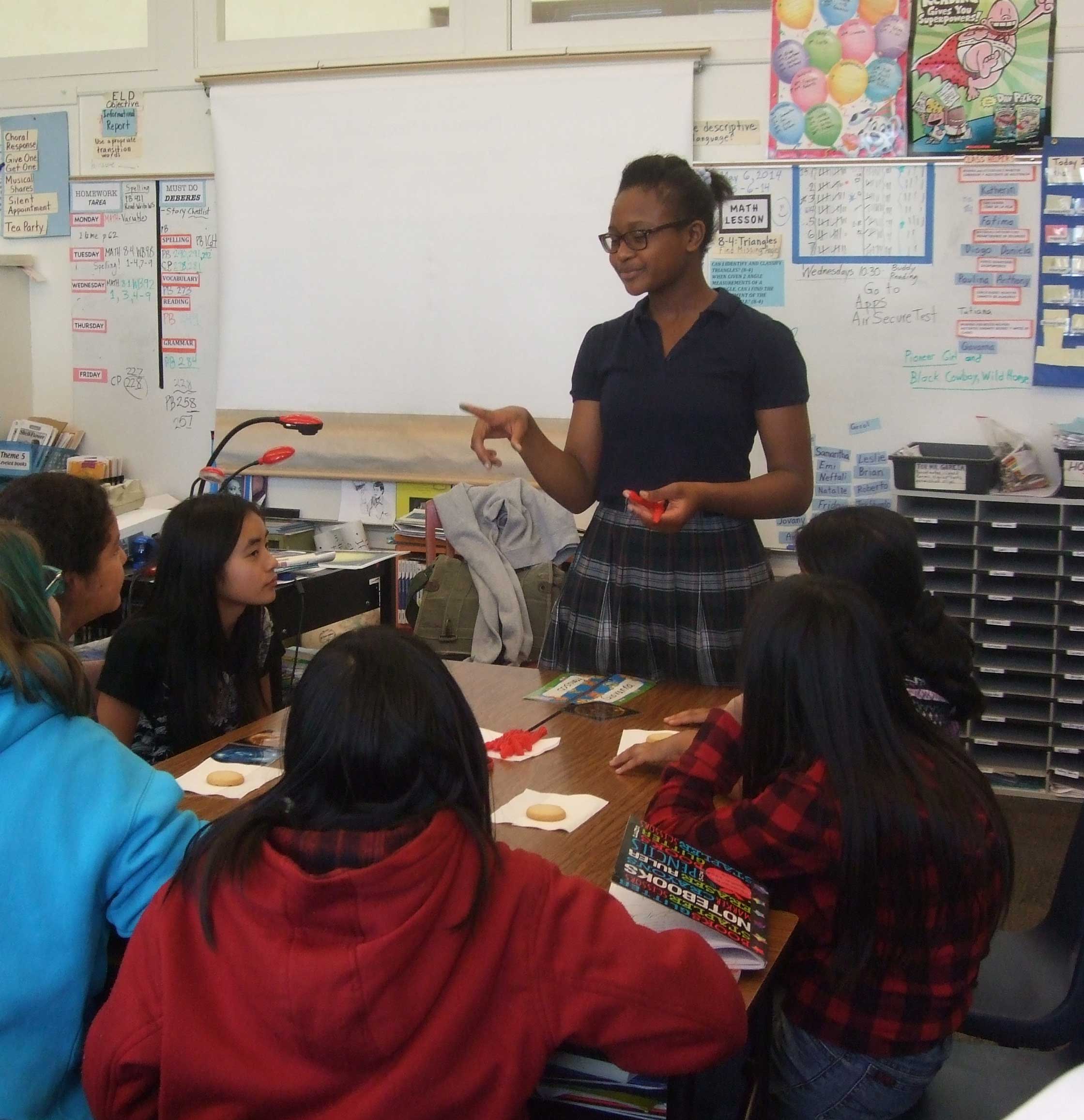By Nancy Alima Ali
“The journey of a thousand miles begins with one step.” ~Lao Tzu
How do you become a rocket scientist? One step at a time.
In my job at the Space Sciences Lab at the University of California at Berkeley, I’m fortunate to work alongside some of the world’s top rocket scientists. Many people know the phrase, “It’s not rocket science,” meaning something not very hard—with the implication that rocket science is extremely difficult for most people by comparison.
 College student explores Space Science Lab with team girl
College student explores Space Science Lab with team girl
While it’s true that rocket science IS complex, what I’ve discovered in talking to my colleagues is that they learned the skills and knowledge to build and launch spacecraft while traveling a long career pathway that began when they were young. Asked why they chose to study space science, many scientists and engineers spoke of inspiring experiences they had as young teenagers. These experiences were often facilitated by adults who were role models they could relate to and who showed them the steps in pursuing a space science career.
Recognizing the need for relatable role models to engage young people in space sciences, the Multiverse education group at UC Berkeley’s Space Sciences Lab created a project called “Five Stars Pathway: Engaging Girls in Science through Multigenerational Mentors.” Funded by NASA (National Aeronautics and Space Administration) and implemented in collaboration with Girls Inc. afterschool organizations, the Five Stars Pathway program developed an intergenerational model in which five “generations” of women and girls engage in science together in an afterschool setting. The five generations are: middle school girls, undergraduate college students, graduate college students, professional scientists and elementary school students. Each generation represents a different stepping stone on the pathway to a career in space sciences.
Young teenage girls (i.e. ages 12-15) were the core target audience of the program – the generation which brings everyone together. Our choice was intentional, since research shows that in the United States, girls tend to disengage from science in the middle school years. Because this is a critical time period for students making decisions that can affect their future career choices, encouraging girls to explore science and build confidence in their ability to do science is important to increasing the number of women pursuing science as a profession.
 Teen girl teaches elementary girls about the sun
Teen girl teaches elementary girls about the sun
Female UC Berkeley undergraduate and graduate students in physics and astronomy acted as guest instructors for teenage girls in Girls Inc. afterschool programs in the San Francisco East Bay area. They taught them to use the electromagnetic spectrum as the basis of exploring the Sun, our solar system and the Universe. Since they were only a few years older than the teenage girls, these college students represented an attainable step in the pathway to becoming a scientist. The teen girls not only learned about the electromagnetic spectrum in physics and astronomy, they also got a glimpse into what it’s like to be a college student. In essence, the college students made more explicit the stepping stones in the pathway, from being a middle school student with interest in science to being a college student choosing to pursue space science as a major. Professional scientists from UC Berkeley’s Space Sciences Lab made guest appearances to meet with the teens in the afterschool program, giving them a taste of what it is like to be a woman leading and working on space science research and spacecraft missions. This showed the teen girls the real possibilities of pursuing a space science career pathway.
But perhaps the most valuable part of the Five Stars experience was the opportunity for the teen girls to act as role models for elementary-aged girls. After working with the college students and scientists, the teen girls chose one piece of what they learned from their elders to teach, in turn, to elementary girls. By becoming role models for the younger girls, the teens not only deepened their own understanding of the electromagnetic spectrum content, they also got a huge confidence boost that they were “the experts,” seeing themselves in the role of scientist.
While the Five Stars Pathway project focused specifically on girls, the same intergenerational model could be used to engage students of any gender in STEM. Making the steps of the space science career pipeline more explicit allows any student – male or female – to better understand what it takes to go from middle school…to rocket scientist!
For more information about the Five Stars Pathway program, including the electromagnetic spectrum curriculum which was used in the Girls Inc. afterschool program, please visit http://multiverse.ssl.berkeley.edu/FiveStars.
 Nancy Alima Ali, M.Ed., is a Coordinator of Public Programs at Multiverse at the Space Sciences Lab at the University of California, Berkeley. For over 15 years, Ms. Ali has been managing educational programs related to the intersections of science and culture for a wide variety of audiences.
Nancy Alima Ali, M.Ed., is a Coordinator of Public Programs at Multiverse at the Space Sciences Lab at the University of California, Berkeley. For over 15 years, Ms. Ali has been managing educational programs related to the intersections of science and culture for a wide variety of audiences.







